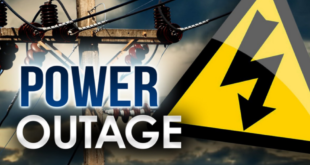Hurricane Florence continues its track toward toward the mid-Atlantic coast of the United States and is expected to be a major hurricane when it makes landfall.
We have posted an update on 13 September: Hurricane Florence is Upon Us.
 The national weather service has issued a Hurricane Advisory for the mid-Atlantic United States as of 1000 hours EDT, Sunday 09 September 2018. At this time there are no warnings or watches in effect. That said, it is expected that Hurricane Florence will make landfall on Thursday, 13 September 2018.
The national weather service has issued a Hurricane Advisory for the mid-Atlantic United States as of 1000 hours EDT, Sunday 09 September 2018. At this time there are no warnings or watches in effect. That said, it is expected that Hurricane Florence will make landfall on Thursday, 13 September 2018.
Residents and visitors can expect winds to begin to arrive on Wednesday, 12 September 2018 at around 2000 hours EDT, and to be well inland by 0800 hours EDT on 13 September 2018.
At the bottom of this page preparedness guides and timelines are provided.
Virginia -
Governor Ralph Northam has declared a state of emergency in anticipation of Hurricane Florence’s arrival. Read full Virginia State of Emergency Hurricane Florence declaration.
The Virginia Department of Emergency Management (VDEM) encourages preparation for the storm’s arrival - with emphasis to “Turn around and don’t drown” as the risk of flooding is very real.
Resources: Virginia’s emergency preparedness guide. www.VAemergency.gov/hurricanes.
Coastal Virginia - Know Your Zone - a guide to assist when evacuations are ordered. www.KnowYourZoneVA.org
North Carolina -
Governor Roy Cooper has declared a state of emergency in anticipation of Hurricane Florence’s arrival. Read the full North Carolina State of Emergency declaration.
Sun morn #Florence update
• Dangerous rip currents & surf this week
• Still TS; likely to be hurricane later today
• Increasing potential for impacts. Too soon to know timing, location, magnitude
• Forecast to be major hurricane Mon
• 2-7” rain expected. Some areas may flood pic.twitter.com/t7K6H2nOOO— NC Emergency Managem (@NCEmergency) September 9, 2018
Resources: North Carolina emergency management and preparedness can be found at: https://readync.org/
South Carolina -
South Carolina’s Governor Henry McMaster declared a state of Emergency. Read the entire South Carolina declaration.
Resources - South Carolina emergency management and preparedness can be found at: https://www.scemd.org/
It will change the way you prepare for emergencies. Presenting the #SCEmergency Manager mobile app. Download a new way to be ready in the App Store:https://t.co/fU9zIBU8mS - and on Google Play: https://t.co/621m1QR9sD #EmergencyPrep #SCTweets #SCWX pic.twitter.com/MjMJZW48TN
— SCEMD (@SCEMD) June 2, 2018
Georgia -
The Georgia emergency management believes the likelihood of severe impact from Hurricane Florence at this time to be low.
While the possibility of impacts to Georgia is somewhat low at this time, now is when you should review your emergency plan and make sure your Ready kit is stocked. #gawx https://t.co/RfmPNZ8zC1
— Georgia EM&HS (@GeorgiaEMA) September 9, 2018
Resources: Georgia’s emergency management and preparedness can be found here: http://www.gema.ga.gov
Florida -
While the likelihood of Hurricane Florence making landfall in Florida is low, we include the link to the resources in event the direction changes.
Resources: Florida’s emergency management and preparedness can be found here: https://www.floridadisaster.org
While it's path is hard to predict, #Florence is already raising the risk of rip currents and dangerous surf across a large portion of the eastern US. Beach-goers on Florida's east coast should exercise caution and mind warning flags. pic.twitter.com/zmUwqHtbVK
— Florida SERT (@FLSERT) September 9, 2018
FEMA Hurricane Preparedness Video:
Ready.gov Hurricane Preparedness tips
IF YOU ARE UNDER A HURRICANE WARNING, FIND SAFE SHELTER RIGHT AWAY
- Determine how best to protect yourself from high winds and flooding.
- Evacuate if told to do so.
- Take refuge in a designated storm shelter, or an interior room for high winds.
- Listen for emergency information and alerts.
- Only use generators outdoors and away from windows.
- Turn Around, Don’t Drown! Do not walk, swim, or drive through flood waters.
Prepare NOW
- Know your area’s risk of hurricanes.
- Sign up for your community’s warning system. The Emergency Alert System (EAS) and National Oceanic and Atmospheric Administration (NOAA) Weather Radio also provide emergency alerts.
- If you are at risk for flash flooding, watch for warning signs such as heavy rain.
- Practice going to a safe shelter for high winds, such as a FEMA safe room or ICC 500 storm shelter. The next best protection is a small, interior, windowless room in a sturdy building on the lowest level that is not subject to flooding.
- Based on your location and community plans, make your own plans for evacuation or sheltering in place.
- Become familiar with your evacuation zone, the evacuation route, and shelter locations.
- Gather needed supplies for at least three days. Keep in mind each person’s specific needs, including medication. Don’t forget the needs of pets.
- Keep important documents in a safe place or create password-protected digital copies.
- Protect your property. Declutter drains and gutters. Install check valves in plumbing to prevent backups. Consider hurricane shutters. Review insurance policies.
When a hurricane is 36 hours from arriving
- Turn on your TV or radio in order to get the latest weather updates and emergency instructions.
- Restock your emergency preparedness kit. Include food and water sufficient for at least three days, medications, a flashlight, batteries, cash, and first aid supplies.
- Plan how to communicate with family members if you lose power. For example, you can call, text, email or use social media. Remember that during disasters, sending text messages is usually reliable and faster than making phone calls because phone lines are often overloaded.
- Review your evacuation zone, evacuation route and shelter locations. Plan with your family. You may have to leave quickly so plan ahead.
- Keep your car in good working condition, and keep the gas tank full; stock your vehicle with emergency supplies and a change of clothes.
When a hurricane is 18-36 hours from arriving
- Bookmark your city or county website for quick access to storm updates and emergency instructions.
- Bring loose, lightweight objects inside that could become projectiles in high winds (e.g., patio furniture, garbage cans); anchor objects that would be unsafe to bring inside (e.g., propane tanks); and trim or remove trees close enough to fall on the building.
- Cover all of your home’s windows. Permanent storm shutters offer the best protection for windows. A second option is to board up windows with 5/8” exterior grade or marine plywood, cut to fit and ready to install.
When a hurricane is 6-18 hours from arriving
- Turn on your TV/radio, or check your city/county website every 30 minutes in order to get the latest weather updates and emergency instructions.
- Charge your cell phone now so you will have a full battery in case you lose power.
When a hurricane is 6 hours from arriving
- If you’re not in an area that is recommended for evacuation, plan to stay at home or where you are and let friends and family know where you are.
- Close storm shutters, and stay away from windows. Flying glass from broken windows could injure you.
- Turn your refrigerator or freezer to the coldest setting and open only when necessary. If you lose power, food will last longer. Keep a thermometer in the refrigerator to be able to check the food temperature when the power is restored.
- Turn on your TV/radio, or check your city/county website every 30 minutes in order to get the latest weather updates and emergency instructions.
Survive DURING
- If told to evacuate, do so immediately. Do not drive around barricades.
- If sheltering during high winds, go to a FEMA safe room, ICC 500 storm shelter, or a small, interior, windowless room or hallway on the lowest floor that is not subject to flooding.
- If trapped in a building by flooding, go to the highest level of the building. Do not climb into a closed attic. You may become trapped by rising flood water.
- Listen for current emergency information and instructions.
- Use a generator or other gasoline-powered machinery outdoors ONLY and away from windows.
- Do not walk, swim, or drive through flood waters. Turn Around. Don’t Drown! Just six inches of fast-moving water can knock you down, and one foot of moving water can sweep your vehicle away.
- Stay off of bridges over fast-moving water.
Be Safe AFTER
- Listen to authorities for information and special instructions.
- Be careful during clean-up. Wear protective clothing and work with someone else.
- Do not touch electrical equipment if it is wet or if you are standing in water. If it is safe to do so, turn off electricity at the main breaker or fuse box to prevent electric shock.
- Avoid wading in flood water, which can contain dangerous debris. Underground or downed power lines can also electrically charge the water.
- Save phone calls for emergencies. Phone systems are often down or busy after a disaster. Use text messages or social media to communicate with family and friends.
- Document any property damage with photographs. Contact your insurance company for assistance.
 Travel Securely Securely Travel
Travel Securely Securely Travel





One comment
Pingback: Hurricane Florence - is upon us | Securely Travel